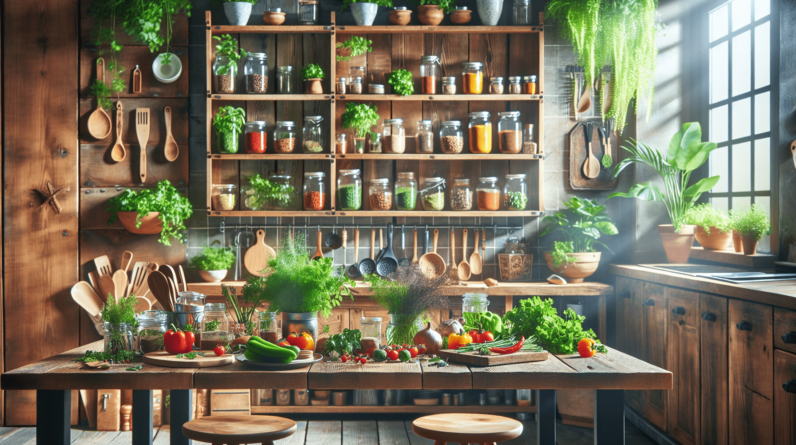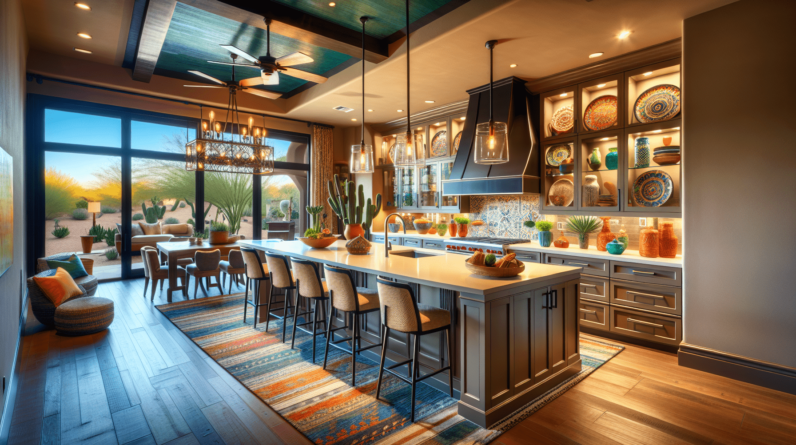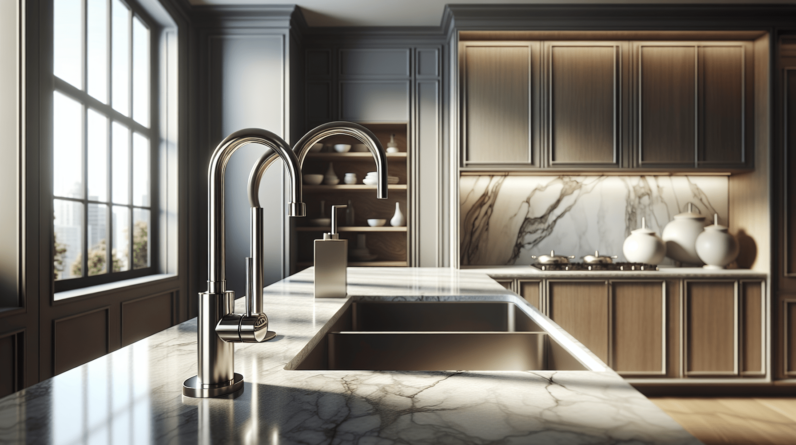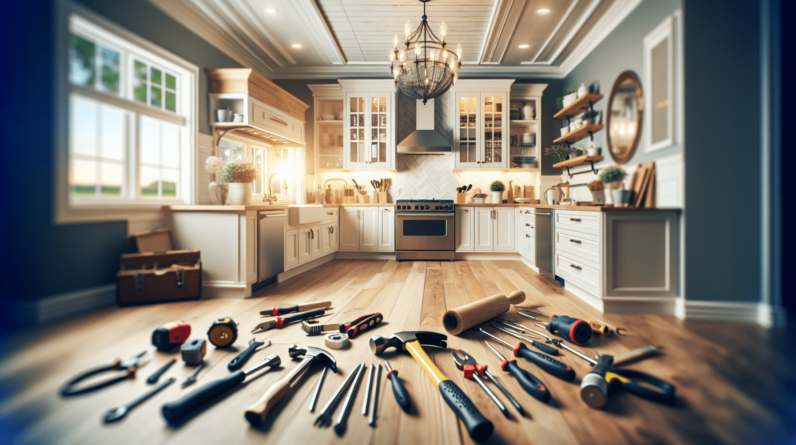

Have you ever found yourself feeling cramped in your small kitchen, wishing for more space or a fresh look? You’re not alone! Many homeowners face the challenge of remodeling a small kitchen, and it can be both exciting and a bit overwhelming. It’s all about maximizing the space you have while creating a functional and stylish environment.
Understanding Your Space
Before you jump into any remodeling projects, it’s crucial to understand the current layout and limitations of your kitchen. This assessment will help you identify what you can change and what will work best for your cooking and storage needs.
Measuring Your Kitchen
Start by measuring your kitchen meticulously. Take note of all dimensions, including the height of cabinets, the width of appliances, and the length of countertops. Documenting these details will ensure that your remodel remains practical and efficient. Create a simple table to map out your measurements:
| Feature | Measurement |
|---|---|
| Length | X feet |
| Width | Y feet |
| Height (cabinets) | Z feet |
Assessing Your Needs
What do you want from your small kitchen? Is it more counter space, additional storage, or a more modern look? Perhaps you wish to create a cozy and inviting atmosphere. Write down your priorities to help guide your remodeling decisions.
Creating a Functional Layout
Layout matters immensely in small kitchen design. A functional layout can make your kitchen more efficient and enjoyable to work in.
The Work Triangle
Think about the work triangle—your stove, sink, and refrigerator should ideally form a triangle for a more functional workspace. Ensure that there’s enough space between these elements to avoid feeling cramped while cooking.
Tip: An ideal kitchen work triangle should be between 12-26 feet for optimal efficiency.
Open Shelving vs. Cabinets
Open shelving can create an illusion of space by making the kitchen feel less enclosed. It allows you to display your favorite dishes and accessories, adding a personal touch. However, if you prefer more discreet storage, consider cabinets with glass doors to achieve a mix of both worlds.
Choosing the Right Color Scheme
Colors play a significant role in how your kitchen feels. Light colors can make a small space appear larger, while darker shades can create a more intimate atmosphere.
Light Colors
Consider using lighter shades, such as whites, pale grays, or soft pastels. These colors reflect light naturally and can make your kitchen feel airy and open.
Example Color Palette:
- Soft White
- Light Gray
- Pale Blue
- Mint Green
Accent Colors
Incorporate splashes of color through accessories or an accent wall. Choosing a bold color for a small section can create a focal point and add character without overwhelming the space.
Smart Storage Solutions
In a small kitchen, smart storage is essential. You want to maximize every inch while keeping it organized and accessible.
Under-Cabinet Storage
Utilizing the space beneath your cabinets can free up valuable counter space. You can install hooks for pots and pans, or use magnetic strips for knives. Consider installing under-cabinet lighting to brighten up the area, too.
Vertical Storage
Don’t forget about vertical space! Use tall cabinets that reach the ceiling, or install shelves above doorways and entry points. This will not only add storage but also draw the eye upward, making the room feel larger.
Pull-Out Drawers and Lazy Susans
These innovative kitchen accessories can help you make the most of your cabinets. Pull-out drawers are great for storing pots and pans, while lazy Susans can help you access spices or condiments with ease.
Selecting Fixtures and Appliances
The right appliances and fixtures can significantly enhance the functionality of your small kitchen.
Compact Appliances
Look for compact, space-saving appliances that fit your lifestyle. For instance, consider a slim refrigerator or a combination microwave and oven. These can provide the same function without taking up too much space.
Undermount Sink
An undermount sink can give you more counter space and an effortless transition between sink and countertop. Pair it with a stylish faucet that fits your kitchen’s aesthetic, and you’ll have a functional yet elegant focal point.

Countertop Considerations
Countertops are not just about aesthetics; they play an essential role in functionality too.
Material Selection
Choose materials that not only look good but also withstand your kitchen’s daily use. Quartz is a popular choice for its durability and easy maintenance. If you’re after a less pricey option, consider laminate, which offers a range of designs and is easy to clean.
Maximizing Counter Space
If you’re short on counter space, you might want to consider adding a mobile kitchen island or a kitchen cart. These can serve as extra prep areas and can be wheeled away when not in use, allowing for flexible use of your space.
Lighting Techniques
Proper lighting can transform your kitchen. A well-lit kitchen not only makes cooking easier but can also enhance the overall ambiance.
Ambient Lighting
Installing ceiling fixtures that provide general light is essential, but consider adding dimmers. This allows you to adjust the mood of your kitchen depending on the time of day or occasion.
Task Lighting
Ensure your workspace is well-lit with under-cabinet lighting and pendant lights over islands or counters. This makes cooking and prep work safer and more enjoyable.
Flooring Choices
The flooring you choose can significantly affect both functionality and aesthetics in a small kitchen.
Durable Options
Look for flooring options that are easy to clean and can withstand spills. Porcelain tiles, vinyl, or laminate are great choices that offer durability without sacrificing style.
Creating Illusions with Patterns
Using larger tiles or a diagonal pattern can create the illusion of greater space. Conversely, avoid overly busy patterns that can make your kitchen feel cluttered.
Personal Touches
After focusing on functionality and design, it’s time to add your personal touch to the space. This is what transforms your kitchen from a mere cooking area into a cozy gathering space.
Decor Elements
Consider incorporating personal decor elements like framed family photos, a chalkboard for notes, or a small herb garden on the windowsill. This will create warmth and character.
Unique Accessories
Choose kitchen accessories that reflect your style. From colorful dishware to decorative bowls, these items will make your kitchen feel like home.
Budgeting for Your Remodel
Setting a budget for your kitchen remodel is crucial to avoid overspending and financial stress.
Establishing Your Budget
Determine how much you can allocate to the remodel. Consider costs for materials, labor, and any unexpected expenses that may arise. Having a clear budget will help guide your choices and keep your project on track.
Finding Budget-Friendly Alternatives
You don’t have to break the bank to achieve a beautiful kitchen. Look for budget-friendly alternatives such as refinishing cabinets instead of replacing them or opting for a peel-and-stick backsplash rather than a full tile installation.
Hiring Professionals vs. DIY
As you consider your options for remodeling, you might wonder whether to hire professionals or tackle the project yourself.
When to Call a Professional
If your project involves structural changes, electrical work, or plumbing, it’s wise to hire professionals. They have the expertise to ensure everything is safe and up to code.
DIY Projects to Consider
For cosmetic changes such as painting cabinets, installing shelves, or adding decorative elements, you might opt for a DIY approach. These projects can save you money and allow for greater personal involvement in your kitchen transformation.
Staying Organized During Your Remodel
Keeping everything organized during your kitchen remodel can make the process smoother and less stressful.
Create a Timeline
Establish a timeline for each phase of the remodel, whether it’s demolition, installation, or finishing touches. This will help you stay on track and avoid confusion.
Document Your Progress
Take photos of every step of your remodel. Not only will this help you keep track of changes, but it will also serve as a fun way to reflect on your journey once the project is complete.
Embracing the Final Result
At last, after all your planning, measuring, and renovating, you are nearing completion. Stand back and admire the incredible transformation of your small kitchen.
Enjoying Your New Space
Take the time to enjoy your newly remodeled kitchen. Host a gathering with friends and family, try out new recipes, or simply relish in the joy of cooking in a space that reflects your style and meets your needs.
Continuing Maintenance
Once your kitchen makeover is complete, remember that occasional maintenance is key to keeping it in great shape. Regularly clean surfaces, check for repairs, and update decor or accessories to keep your kitchen feeling fresh and inviting.
Conclusion
Remodeling a small kitchen can be a rewarding endeavor, transforming a cramped space into a practical and beautiful area. By understanding your space, prioritizing your needs, and embracing clever solutions, you can create a kitchen that’s not only functional but also a reflection of your personal style. Whether you choose to do it yourself or enlist professionals, the effort you invest will undoubtedly lead to a kitchen you’ll love for years to come.






